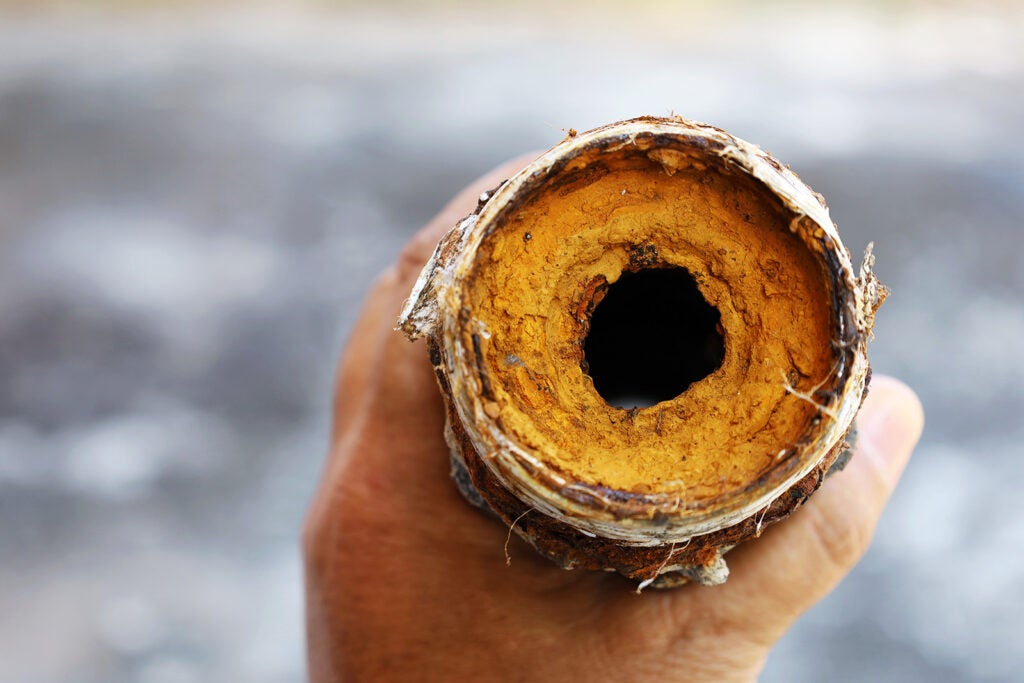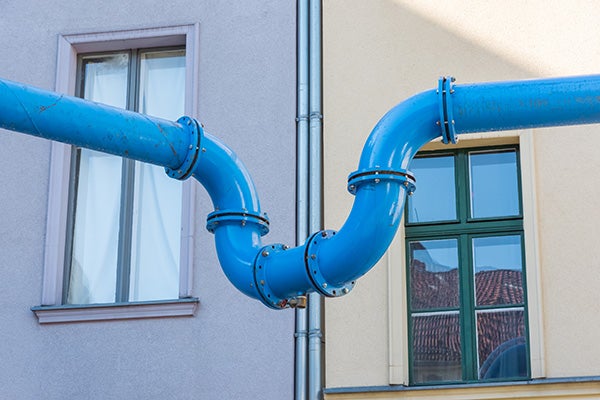Blocked Drains / Sewage Overflow

If a blockage occurs in a drain pipe or sewer, responsibility for preparing it is determined by where the problem is located.

Whose Pipe Is It
Do you know who is responsible for your water supply or drains? Use this guide to find out.
Who’s Responsible
Homeowner Responsibility
As a homeowner, you are responsible for: all of the pipes inside of the property. Toilets, sink drains, and any exterior guttering or pipes connected to the property, the portion of underground pipe that reaches a shared pipe or public sewer.
BRWA Responsibility
The BRWA’s responsibility: drains shared by multiple properties, drains outside of the property boundary, and public sewers.
Is it My Pipe That’s Blocked
Do your neighbors have the same problem?
If your neighbor is experiencing a similar problem, the blockage is likely in our sewers or pipes, and it’s our responsibility to fix it. If your neighbor isn’t having a similar problem, the blockage is likely to be on your property and it’s your responsibility to fix it.
Are other rooms affected?
If the problem only affects one room in your home and the others are alright, the blockage is in your property’s pipes, and it’s your responsibility to fix it.
Fixing a Problem on Your Property:
If You Live In A Rental Property
Contact your landlord and share the problem with them immediately.
If You Are The Property Owner
Contact your insurance provider before searching for a drainage contractor. Your insurance provider will be able to help you file a claim. If you do not notify your insurance provider, it may impact any future insurance claim.
We are not liable for blockages that are beyond our control. Therefore, your insurance provider is more able to assist you with loss and damages. You will need to hire a plumber if your insurance does not cover the problem.
If The Problem Is On Our End
Let us know
If multiple rooms in your home and your neighbor is experiencing a similar problem, the blockage is likely in our sewers or pipes, and it’s our responsibility to fix it.
If we are unaware of the problem and it is outside of your property, please contact us so we can help.
We’ll look into it
If there’s sewage within your home or property, we will make every effort to be there the same day. We’ll need you to be there when we visit. If you aren’t available, we can make you an appointment for a later date. We will contact you on the day of your appointment to let you know that a BRWA representative is on their way.
Upon arrival, the representative will determine what is causing the problem and clean up the mess if the blockage is our responsibility. The representative will then share with you what happens next.
Note: if the BRWA representative finds a blockage on your property, it is your responsibility. We will not be able to fix it and a plumber should be contacted.
What happens next
If there’s a problem with our piping, we’ll take responsibility and fix it. Seeing that every case is unique, it’s hard to say how long the problem will take to fix.
If it’s an easy fix, we may be able to address it in our initial visit. If it’s a difficult fix, it may take some time and multiple visits to correct. If multiple visits are needed, we’ll reach out to you to confirm another appointment.
Frequently Asked Questions
What causes a Sewer to leak or flood?
Here are some of the most common culprits that should never be flushed or poured down the drain.
- Grease and cooking fat: When cooking waste – fat or other oils – build up inside a pipe, it can cause drains to clog. This can result in huge fat deposits in the sewage system, dubbed “fat-burgs”, which cost lots of money to remove each year.
- Wet wipes and paper towels: Wipes clog pipes! Toilets are designed to remove human waste and toilet paper only. Even though the package says “Flushable”, these pesky things take years to degrade. Remember the rule: only flush the 3P’s – pee, poo, and paper (toilet paper).
- Dental floss: Despite its thinness, dental floss is often made of nylon or Teflon. These two materials are very strong and don’t degrade naturally. If flushed down the drain, this can cause serious environmental damage.
- Coffee grounds: When coffee grounds are mixed with liquid or grease, they make a sticky nightmare. It’s no surprise that they’re one of the biggest culprits behind clogged drains. You don’t even have to throw them away. Instead, scatter them over your garden to deter insects and give your plants a boost!
- Diapers: Diapers are made of materials that expand when they touch the water. This makes them ideal for clogging drains and sewer systems. This can cause water to back up into your home from the sewer – which is not a situation that you want to be in.
How can I prevent blockages?
If you flush things that shouldn’t be or pour things that shouldn’t be down the drain, you’re risking a clogged pipe. The easiest way to stop this is to remember this rule:
Only flush the 3Ps:
- Pee
- Poo
- Paper (toilet paper)
How do I clean my property after a sewer leak?
- Wash all hard surfaces with a mild detergent or disinfectant. If you are using a disinfectant, don’t wipe it off immediately or it won’t work as well.
- Put any soft furnishings that are heavily damaged and can’t be repaired outside – this will help stop bacteria from spreading.
- Wash all clothing, bedding, and other soft items at 140°f or above. Items that aren’t machine washable should be professionally cleaned or disposed of.
- Let everything dry completely – this will help kill germs. Gentle heating with ventilation will help things dry.
How do I clean my garden after a sewer leak?
- Wash and disinfect hard surfaces like paths and drives – keep off them for 3 hours to let the disinfectant work.
- Don’t apply disinfectant to lawns and borders because it can kill plants. The best thing to do is leave them and let nature take its course.
- Don’t dig or rake any affected ground, this will spread the bacteria deeper into the soil.
- The sun’s UV rays are great at killing bacteria. This can happen in just 9 days when the weather is warm and dry. If the weather is cold and wet, it could take around 25 days for bacteria levels to return to normal.